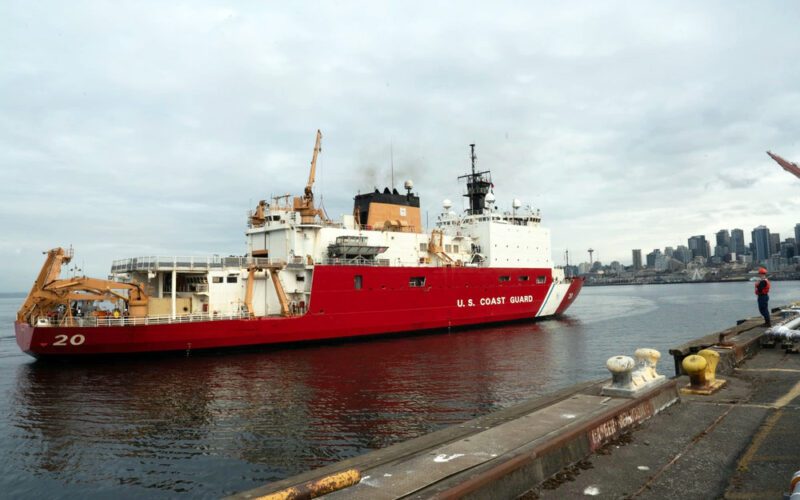
The U.S. Coast Guard cutter Polar Star returned to Seattle on Aug. 25 following 285 days away from its home port.
After a 138-day deployment to Antarctica, the Polar Star reported to Mare Island Dry Dock in Vallejo, Calif., to commence the fourth phase of a five-year Service Life Extension Project (SLEP).
The work completed at Mare Island was part of an in-service vessel sustainment program aimed at recapitalizing targeted systems, including propulsion, communication and machinery controls, as well as effecting significant maintenance to extend the cutter’s service life.
Phase four of the cutter’s SLEP took place over about 140 days and represented a total investment of $16.8 million, according to the Coast Guard. The contracted work and recurring maintenance is taking place within a five-year, annually phased production schedule running from 2021 through 2025.
The Coast Guard is also investing in a new fleet of polar security cutters to meet mission needs in both the Arctic and Antarctic regions, so the SLEP allows Polar Star to continue providing access to the Polar regions until the PSCs are operational and assume the high latitude missions.
Before her return, the Polar Star held a July 8 change-of-command ceremony in Vallejo, where Capt. Jeff Rasnake relieved Capt. Keith Ropella as the cutter’s commanding officer. Rasnake was previously the Polar Star’s executive officer, or second in command.
Ropella transferred to the office of cutter forces where he now oversees management of the operational requirements for the cutter fleet.
Polar Star is the Coast Guard’s only active heavy polar icebreaker and is the U.S.’s only asset capable of providing year-round access to both polar regions. Commissioned in 1976, she is 399 feet long, weighs 13,500 tons and has a 34-foot draft.
Despite her advanced age, Polar Star remains the world’s most powerful non-nuclear icebreaker with the ability to produce up to 75,000 horsepower, according to the Guard.

